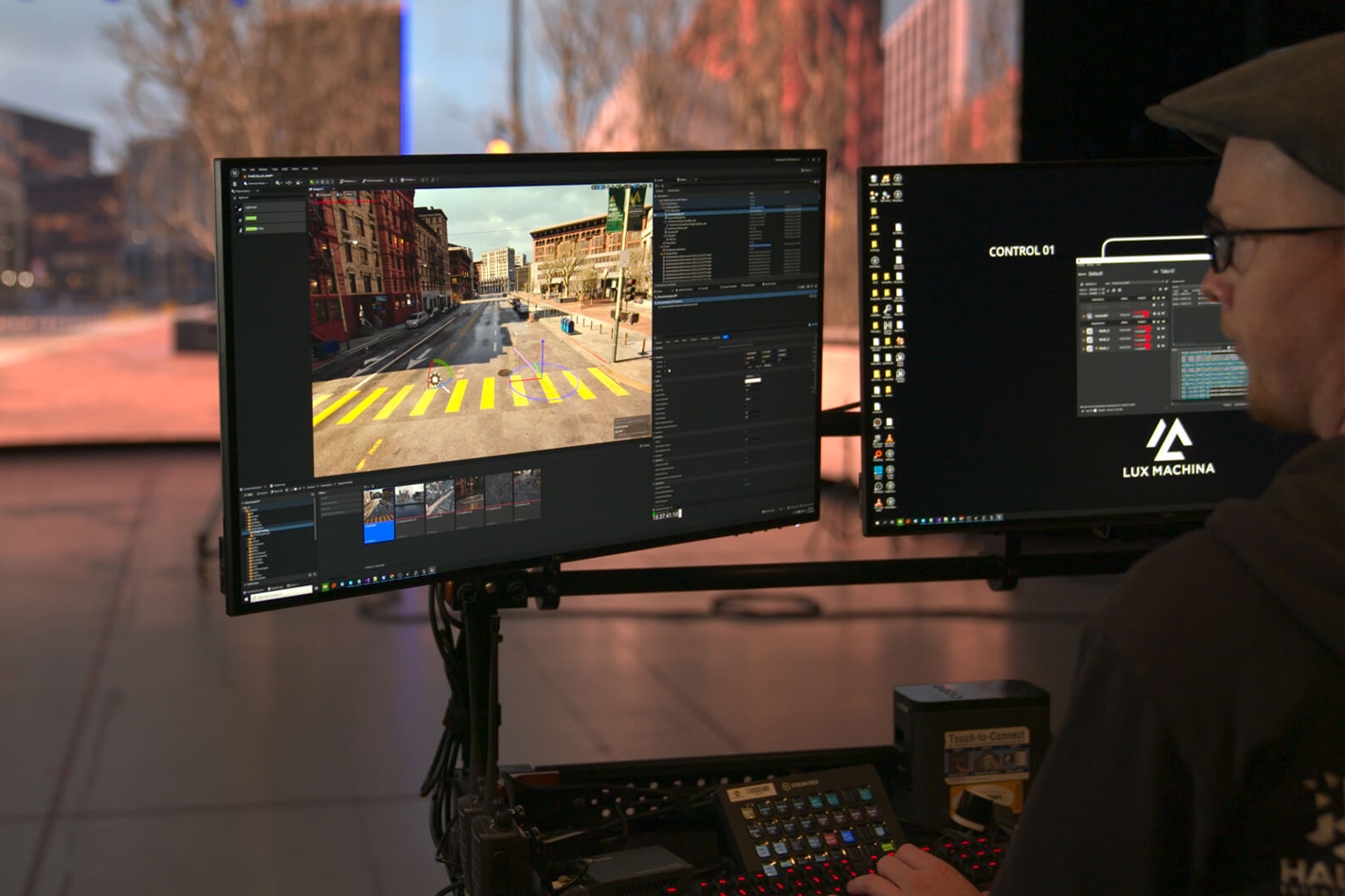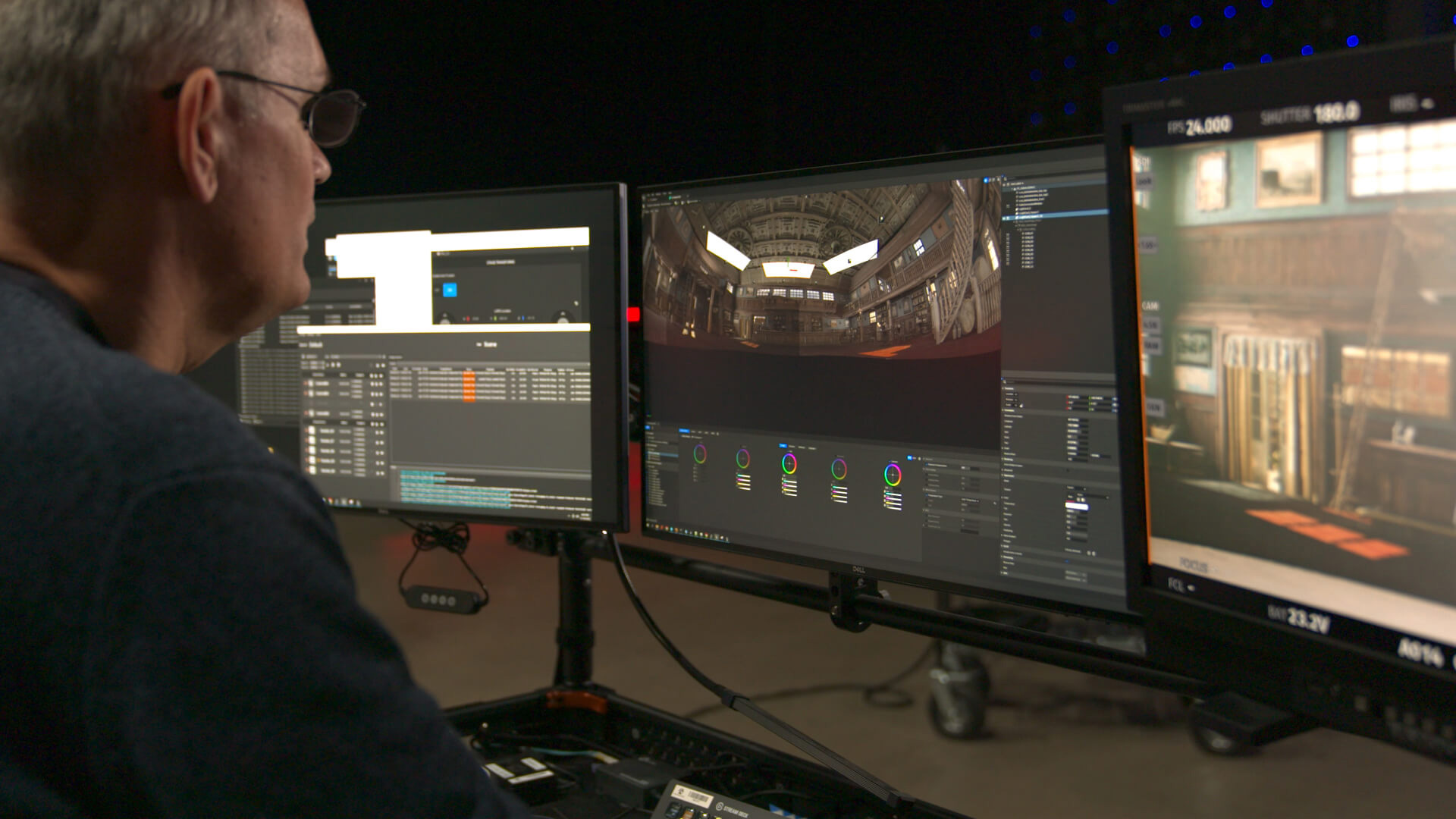
Epic Games announced that Unreal Engine 5.1 is now available. With this release, the team says, “we’ve built upon the groundbreaking feature set introduced in UE5, making it more robust, efficient, and versatile for creators across all industries” adding “as part of this effort, we’ve been stress-testing the engine against different workflows, making it applicable to more sectors.”
The exponential growth in adoption of Unreal Engine over the last two years by media and entertainment professionals and companies of all sizes has yielded successful projects like performance-driven character animation YouTube show Xanadu, the Caledon soccer commercial by Pixomondo, and the new virtual production studio by Fox Sports. With Unreal Engine 5.1, Epic Games’ aim is to empower the industry to build on that success, with a toolset that’s more extensive, robust, and accessible than ever before.
Lumen, Nanite, and Virtual Shadow Maps updates are a key element of this new version. Epic Games has laid the groundwork for the Lumen dynamic global illumination and reflections system, the Nanite virtualized micropolygon geometry system, and Virtual Shadow Maps (VSM) to support games and experiences running at 60 fps on next-gen consoles and capable PCs, enabling fast-paced competitive games and detailed simulations to run without latency.
The new features or updated ones cover different aspects, especially those related to games development, where the software is a popular choice, but this note, based on the information shared by Epic Games, takes a special look at what’s new, in Unreal Engine 5.1, for makers of both live-action and animated film and television content—including virtual production and LED stage projects—as well as for broadcasters and live event production teams.
So, here is, without further ado, a list of what’s new in Unreal Engine 5.1 for media and entertainment:


Stage operators working under pressure in the fast-paced environment of an LED stage will welcome a new dedicated In-Camera VFX Editor that supports a range of workflows specifically tailored for the tasks they need to carry out. This largely eliminates the need for stage operators to hunt through the Outliner for specific objects and controls.
A corresponding iOS application that mirrors the editor’s functionality, but with a UI adjusted for a touch interaction, is planned for release within the next few weeks. In related news, we’ve improved the UI, UX, and performance of the Remote Control APIs, enabling you to construct powerful custom browser-based remote controls more quickly and easily.
The new editor hosts an interface to an improved Light Card system that displays as a preview of the nDisplay wall. As well as making it intuitive and efficient to create, move, and edit light cards and save templates, the new light cards can retain their shape on the wall, eliminating distortion.
A key instrument in blending between the LED wall and physical set—as well as for fine-tuning the content on the LED wall—color corrections are critical to LED stage workflows. Also accessible from the In-Camera VFX Editor are new Color Correction Windows (CCWs) that enable the adjustments to be applied exclusively to anything behind them (similar to Power Windows in color grading applications), together with the ability to apply color corrections per Actor, which reduces the need for complex masking.
Improved Media Plate workflows and EXR playback
Remember when it took tens of clicks to add an EXR or a movie file to a level or Sequencer track? With Unreal Engine 5.1, a new Media Plate Actor enables you to simply drag and drop footage from the Content Browser. In addition, you can now play back mipmapped and tiled uncompressed EXRs both in engine and with nDisplay with the appropriate SSD RAID. We’ve also included the ability to convert EXRs to the correct format for optimum playback.
Meanwhile, Unreal Engine’s virtual camera system has been overhauled with a new underlying framework that utilizes Epic’s Pixel Streaming technology for improved responsiveness and reliability, and an updated UI with a modern camera-focused design that will be more familiar to camera operators. We’ve also added the ability to connect hardware devices and laid the foundation for customizing the UI in the future.
Improved DMX workflows
In an effort to integrate Unreal Engine more seamlessly into the larger DMX ecosystem, Epic Games enhanced its own support for the MVR format to include fixtures, plots, and patches; when both Unreal Engine and a lighting console need to share DMX data, it can be synchronized between the two systems. Epic Games also improved the Pixel Mapping system UX to support the ever-increasing complexity of driving DMX lighting fixtures from Unreal Engine content data.
Lighting enhancements
Lumen, Unreal Engine’s fully dynamic global illumination and reflections system, now offers initial support for nDisplay. With Lumen, indirect lighting adapts on the fly when you change the sun’s angle, adjust lights, or position bounce cards, for example. Previously, these changes would have required a baking step that could pause production, interrupting the creative flow.
Currently, the number of lights supported is modest (about five to seven lights total, depending on the graphics card). For more complex setups that require more lights, we’ve also made improvements to GPU Lightmass, including support for Sky Atmosphere, stationary Sky Lights, light features such as IES profiles and Rect Light textures, and improved quality and performance across the board.
For anyone dealing with animated content, particularly of characters, Unreal Engine 5.1 offers some worthy advancements to the built-in animation authoring toolset.
Now in Beta, the Machine Learning (ML) Deformer generates high-fidelity approximations of nonlinear deformers, complex proprietary rigs, or any arbitrary deformation by using a custom Maya plugin to train a machine learning model, which in turn runs in real time in Unreal Engine. This enables you to simulate film-quality deformations, such as flexing muscles, bulging veins, and sliding skin.
Other character deformation improvements include enhancements to the Deformer Graph Editor for easier graph creation and editing.
On another front, Control Rig continues to expand toward fully procedural rigging, increasing the impact and scalability of rigging teams. Updates to the core framework include a new Construction Event that enables you to generate rig hierarchies via a graph, and Custom User Events for creating and triggering rig events such as “Snap FK to IK.”
With these updates, you can create a single Control Rig asset that can build itself to fit characters that may have different skeletal proportions and properties. For example, the same Control Rig can adapt itself to a three-fingered monster or a five-fingered human without any changes to the rig asset.
Epic Games has also extended Sequencer—Unreal Engine’s multi-track nonlinear animation editor—by adding support for constraints, including Position, Rotation, and Look-at. With these, you can quickly and easily create and animate relationships between any Control Rig or Actors, for example, making a camera always follow a character; keeping a character’s hands on a steering wheel; animating a clown juggling balls; or constraining a cowboy’s hips so that he sits naturally in the saddle as the horse moves, while his hands hold the reins.
Sequencer also sees additional functionality exposed through Blueprint and Python scripting, and we’ve refactored the UI/UX for increased stability and extensibility, and to improve animation authoring and editing workflows.
If you’re an existing Unreal Engine user, you can download Unreal Engine 5.1 from the Epic Games launcher. If you’re looking to dive in for the first time, click the this link to get started. Unreal Engine is free to use for creating linear content like films, and for custom and internal projects. It’s also free in many cases for game development—a 5% royalty only kicks in if and when your title earns over $1 million USD.


